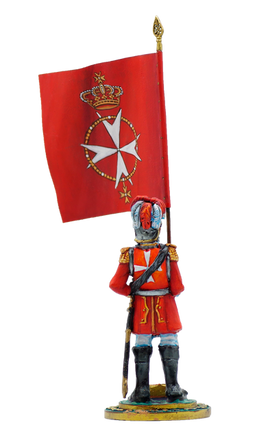
Mario Chigi Albani della Rovere
Prince of Farnese
Mario Chigi Albani della Rovere, 7th Prince of Farnese (Rome, 1 November 1832 - Rome, 4 November 1914), was an Italian prince. Mario was born in Rome on 1 November 1832, the son of Sigismondo Chigi Albani della Rovere, VI Prince of Farnese, and his mother, Princess Leopoldina Doria Pamphilj Landi. Descended from one of the noblest and most illustrious lineages of papal Rome, Mario lived through one of the most problematic periods for the Papal States, with the collapse of papal authority and the loss of possession of the Papal States themselves by the Church government. This was one of the most tragic events that plunged many noble Roman families into crisis, including the Chigi family, which had already been in financial distress since the end of the 18th century (which worsened further in the first half of the 19th century), to the point that Mario himself was forced to sell some works of art from the family collection, some landed estates and even the great Palazzo Chigi in Rome, in the central Piazza Colonna, symbol of the family's power and influence for centuries. He moved with his entire family to Villa Chigi on the Via Salaria, on the outskirts of Rome. What the family had lost in the economic sphere, Mario Chigi was able to find again in the social sphere with a marriage of great importance, that with Princess Antoinette of Sayn-Wittgenstein-Berleburg, niece of the German general naturalised

Russian Peter Wittgenstein, famous for having stopped Napoleon in his attempt to invade St Petersburg. She was also the daughter of Countess Leonilla Bariatinsky (1816-1918), a member of one of the most important Russian families and a cousin of Tsar Alexander II as she was descended from the same lineage as Tsar Peter III of Russia. Mario also joined the Sovereign Military Order of Malta, of which he was a knight, becoming from 1877 until 1890 the first commander of the Special Auxiliary Volunteer Corps of the Italian Army of the Association of Italian Knights of the Sovereign Military Order of Malta. He was also the first president of the Association of Italian Knights of the Sovereign Military Order of Malta from its establishment in 1877 until his death. At the time, between 1876 and 1885, the Grand Priory of Rome of the Sovereign Military Order of Malta was headed by Cardinal Flavio Chigi (1810-1885).

The Gonfalonier (Italian: Gonfaloniere) was the holder of a highly prestigious communal office in medieval and Renaissance Italy, notably in Florence and the Papal States. The name derives from gonfalone (English: "gonfalon"), the term used for the banners of such communes. The title originated from Florence in the 1250s. The holders were known as the head of the militia. A similar office known as Gonfaloniere of Justice (Gonfaloniere di Giustizia) was made to protect the interests of the people. They became part of the city's government, or Signoria. Other central and northern Italian communes, from Spoleto to the County of Savoy, elected or appointed gonfalonieri.

The House of Chigi is an Italian princely family of Sienese origin descended from the counts of Ardenghesca, which possessed castles in the Maremma, southern Tuscany. Later, the family settled in Rome. The earliest authentic mention of them is in the 13th century, with one Alemanno, counsellor of the Republic of Siena. The first very prominent member was Mariano (1439–1504), a banker and two time ambassador of Siena to the Popes Alexander VI and Julius II. He founded the Roman branch of the family, the other branch was started by his brother, Benedetto. Agostino Chigi (1465–1520) was the most famous member of the family during the Renaissance. He became an immensely rich banker, and built the palace and gardens afterwards known as the Farnesina, decorated by Raphael, Sebastiano del Piombo, Giulio Romano, and Il Sodoma, and was noted for the splendour of his entertainments. Pope Julius II made him practically his finance minister and gave him the privilege of quartering his own (Della Rovere) arms with those of the Chigi. Cardinal Fabio Chigi, on being elected pope as Alexander VII at the Conclave of 1655, conferred the Roman patriciate on his family. His elder brother Mario, last commander of the Corsican Guard in Rome, continued the branch of the family in Siena. His brother Augusto continued the line in Rome. Augusto's son Agostino was made Reichsfurst (prince of the Holy Roman Empire) by Leopold I in 1659. Agostino married Maria Virginia Borghese (relative of the Borghese pope), and acquired the principalities of Farnese (1658), Campagnano (1661) and Ariccia, where a
famous palazzo bearing the family name still stands. The pope also had two nephews who became cardinals, Flavio I, who was his Cardinal-Nephew and one of the main art collectors of the family and built the Villa Cetinale in 1680, and Sigismondo. In 1712, Prince Augusto, son of Prince Agostino, received the dignity of hereditary marshal of the Church and guardian of the conclaves, which gave them a prominent ceremonial importance on the death of every pope. During the 18th century, Flavio II was created a cardinal. On the marriage in 1735 of another Agostino Chigi (1710–1769) with Giulia Albani, heiress of the Albani, a Venetian patrician family, said to be of Albanian origin, her name was added to that of Chigi.

The Grand Master's personal flag is red with a white Maltese cross surrounded by the collar of the order and surmounted by a crown. It flies over the SMOM's magistral seats when the Grand Master is in residence.
Awards: Sash and star of the Sovereign Military Hospitaller Order of Saint John of Jerusalem, of Rhodes and of Malta (Supremus Militaris Ordo Hospitalarius Sancti Ioannis Hierosolymitani Rhodiensis et Melitensis).










